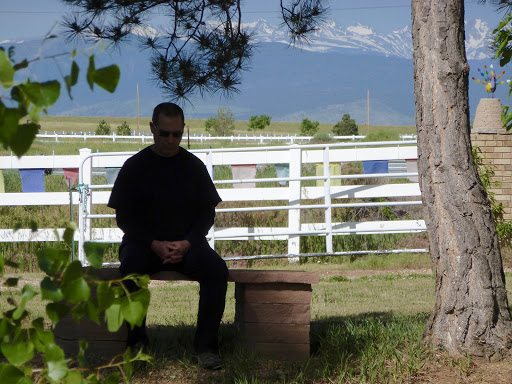
“If your mind is empty, it is always ready for anything, it is open to everything. In the beginner’s mind there are many possibilities, but in the expert’s mind there are few. ”
Shunryu Suzuki
Helpful Thoughts for Those New to Zen, or New to the Abbey
Zen can seem fascinating in books and in videos online. In popular culture, there is a certain mystique to the word “Zen.” Heck, there’s even a cereal! …and a candle, and a TV show, and herbal medicinals. In real life, Zen, for many newcomers, lives right up to their expectations and dreams, while for others, Zen is a big disappointment. Though many like to think of Buddhism as a philosophy and not a religion, we’re sorry to be the bearer of bad news, but Buddhism is a religion…the 4th largest religion in the world. With that said, as Buddhism, and specifically one of the Japanese versions of Buddhism called Zen, which translates as “meditation,” has come to the West, it has not yet grown into a cultural and social set of activities, and instead, has largely maintained it’s mystical foundation. And thus, the Buddhism and Zen that is available to Westerners is a living practice with meditation as the body and service to others as the arms and legs. Of the various forms of Buddhism, Zen is considered to be the least dogmatic, and the emphasis is on a personal unfolding through the practice of meditation and learning from a teacher and community rather than on reading and memorizing new beliefs or trying to act out our ego-fantasies of being a kind and enlightened person. In Zen, we un-do our beliefs and let the true nature emerge unhindered by ideas of how we are supposed to be or how we want to see ourselves or be seen by others. This is a path of radical acceptance.
Across the United States, there are various manifestations of Zen. Some Zen centers and monasteries have held very tightly to the traditions passed across the ocean from Japan, while others have intentionally done away with every bit of cultural Japanese-ness as possible, no longer using any Japanese words, and sometimes not even having a Buddha on the altar. Most centers fall somewhere between the two extremes. At GMZC, some of us wear robes while others do not, sometimes our chants are in Japanese or Sanskrit, though most are in English, and some of us go by Japanese dharma names that we received when we formally became Buddhists, while others do not. We are serious about our Zen practice, but casual in our expression and respectful of the unfolding of each individual.
The Buddha’s first teaching was the Truth of Suffering and the End of Suffering, that life is inherently difficult, and that there are ways to reduce suffering and to make life a little easier. Most people find their way to meditation because something doesn’t feel quite right and they want to learn how to manage thoughts and emotions better, or to better understand how to deal with something in their life that is causing discomfort. Most of us have emotional trauma from events in our lives that we haven’t fully dealt with, like loss of a loved one, chronic medical problems, childhood abuse or neglect, sexual assault, substance abuse, etc.. Most of us have wild monkey minds that just go and go and won’t stop when we’d like them to. Most of us realize that one day we will die and this wonderful thing called life will be over, and so we question, “What am I supposed to be doing with my life?” Many of us drawn toward meditation have a deep, subtle feeling that we know it will be good for us, that we need it, and that sitting with a group will help to get ourselves on the cushion (we all know how hard it is to meditate all alone in our homes!).
As we develop our meditation practice over time and find the answers to these initial questions and our minds and emotions calm down a bit, we find that there is a whole universe of experience that was not available to us before; and we become curious. We may even long to know this universe and it may become more important than anything else. This is where non-denominational meditation groups find their limit and the formalized mystical practices of Buddhism, Yoga, Christian Mysticism, Sufism, Native American Shamanism, Kabbalah, etc., begin. Seeking our True Nature, the Divine, God, the Great Spirit, and eventually finding what we were looking for on a deeper, more subconscious level, is the task of the practitioner of the highest forms of religion, the mystical traditions. Along with religious and more formalized spiritual practice comes form, rituals, and various subcultural norms that manifest to allow the practitioners to go more deeply into their internal journeys. These methods are simply the boats that help move us from one shore to the other.
When you arrive to Maitreya Abbey and walk in, you will see some Americans dressed in Luke Skywalker-looking outfits called samue, while others are in everyday pants and a shirt. Some folks will be wearing a thing around their neck that looks like a bib; it’s a rakusu: this is what Zen students sew themselves when they formally become a Buddhist and “take” or “receive the precepts.” A smaller few may be wearing full-length robes called kimonos and koromos, like in many of the photos you have seen on this website.
The practices of Buddhism have been passed down for 2,500 years and have passed through many countries and subcultures to find their way right here to Colorado. Whether you come to Maitreya Abbey for a little peace of mind or for the formidable goal of enlightenment, you are welcome. There is a place for you. May you be happy and may we help all beings experience freedom from suffering!
